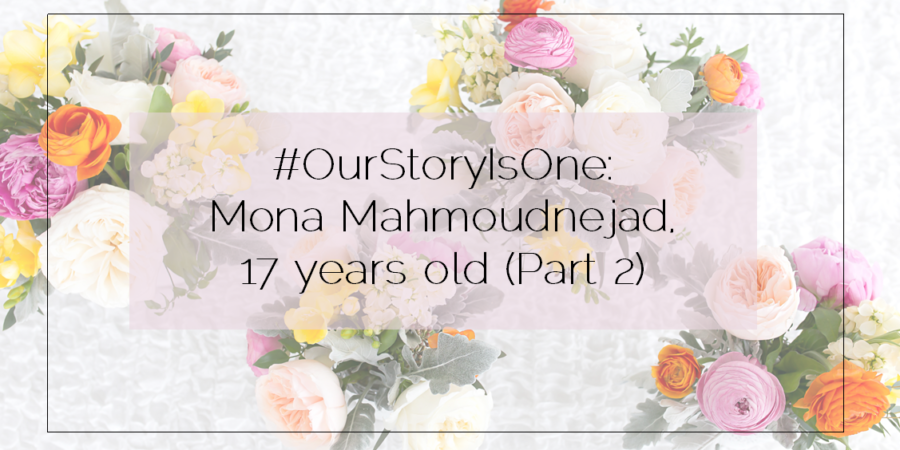You met Mona Mahmoudnejad in my last post (here). At this point in the story, she is 17 years-old, living in Shiraz, expecting to be expelled from her high school because of her Faith, and teaching Bahá’í children’s classes.
On the evening of 23 October 1982, Mona was arrested together with her father. Although the guards heaped abuse on Mona and her father during their arrest, they both remained calm and composed. Mona was then taken to Sepah Detention Centre, then transferred to Adelabad Prison on 28 November 1982, along with five other Bahá’í women. A quick Google search didn’t unearth anything about Sepah Detention Centre; however, Adelabad (also spelled Adeb-Abad) is still operational; it seems like to this day, individuals who are working for justice and freedom are being imprisoned, tortured, and hung there, 40 years after Mona went through the same.
For the first month of her imprisonment, she was held incommunicado; her mother was finally given permission to take part in weekly family visits on 20 November 1982. As a mother now myself, I can imagine what Farkhondeh Mahmoudnejad went through during those days. By then, the interrogators had subjected her to up to four interrogation sessions in which she was pressured to recant her faith. They also tried to force Mona and other detainees to sign a statement denying the Baha’i Faith’s veracity in order to avoid execution.
Mona’s bail was set at about US$35,000. Farkhondeh tried to get the court to accept a mortgage on the small apartment that the family owned in Shiraz, but that was not accepted because the family did not have a clear title. The presiding judge then raised Mona’s bail to about US$88,000. Farkhondeh turned the title of the apartment over to the authorities; they took the property, didn’t release Mona, and arrested Farkhondeh when she came to the prison with documents for Mona’s presumed release.
Trial documents do not contain much information regarding the details of the allegations against Mona. We know that during her detention, Mona was lashed on the soles of her feet with a cable and forced to walk on her bleeding feet.
Mona was executed on 18 June 1983 under cover of darkness, together with the nine other women mentioned previously in this series of posts. The driver of the bus who took the women to their execution, who later met the grandmother of one of the young women, told her: “They were all in the most excellent spirits and were singing many songs on the way. I could not believe that they knew they were going to be executed. I have never seen people in such high spirits.” The women were executed by hanging in Chowgan-Square in Shiraz.
As a final insult, the authorities did not inform Mona’s family of her execution. Her family learned of the execution accidentally and was not allowed to bury her body, as the women’s bodies were not returned to their families.
I know this is a hard read, both for those of you who know this story and those of you who are reading it for the first time. But I think it’s important to remember the reason why these women were killed, so that we may feel their courage and keep going, building the better world that is within our grasp thanks to technological advancements in the last 40 years. They were killed because they believed in the oneness of humanity, in equality and justice for all, and that one day, we would see a better and brighter future for all.
In the next post, I will share the story of the second women in this #OurStoryIsOne project: Roya Eshraghi, who was 23 years-old when she was executed that night of 18 June 1983.

